
- This event has passed.
OLD MASTERS
21 Feb - 12 Apr
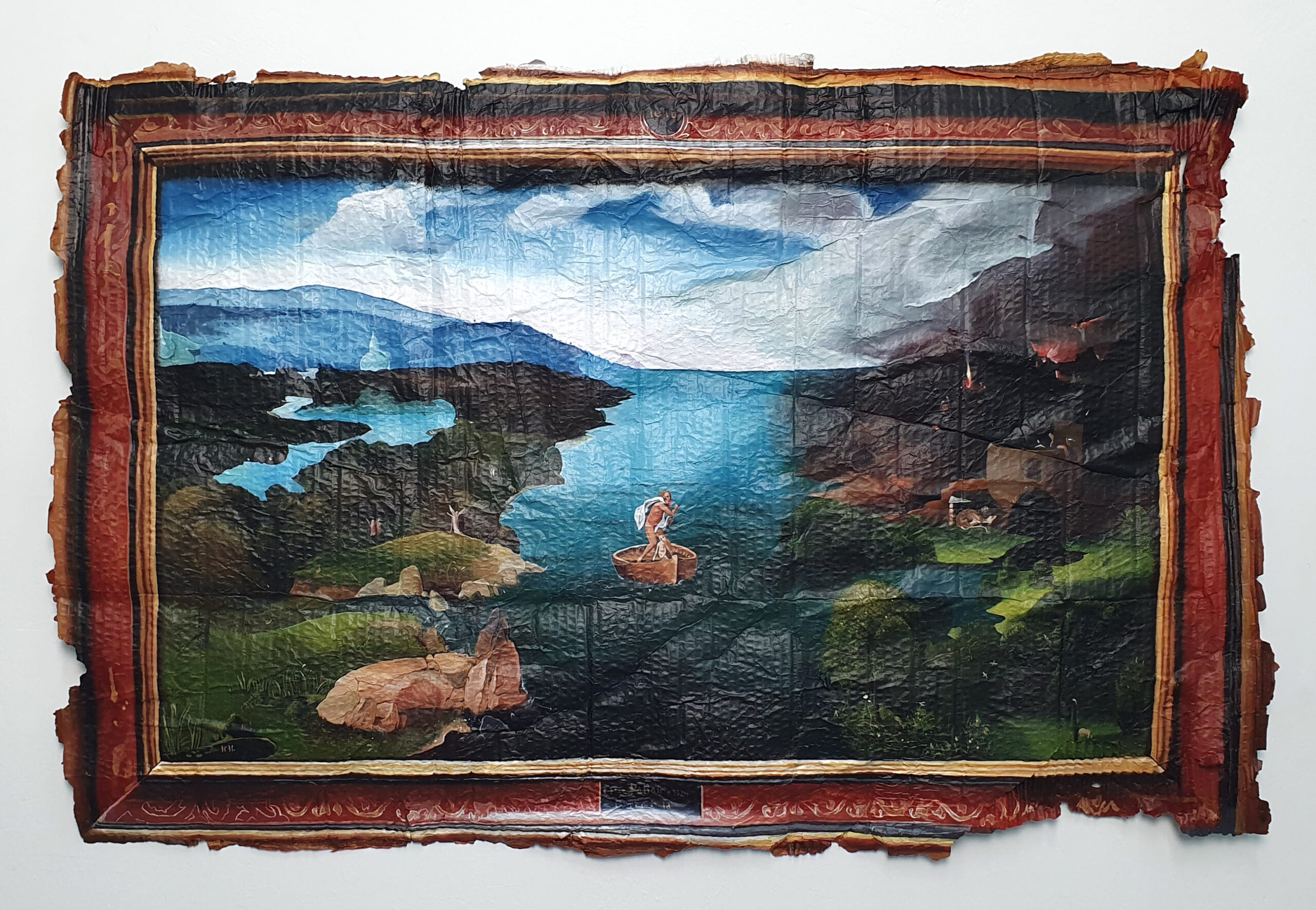
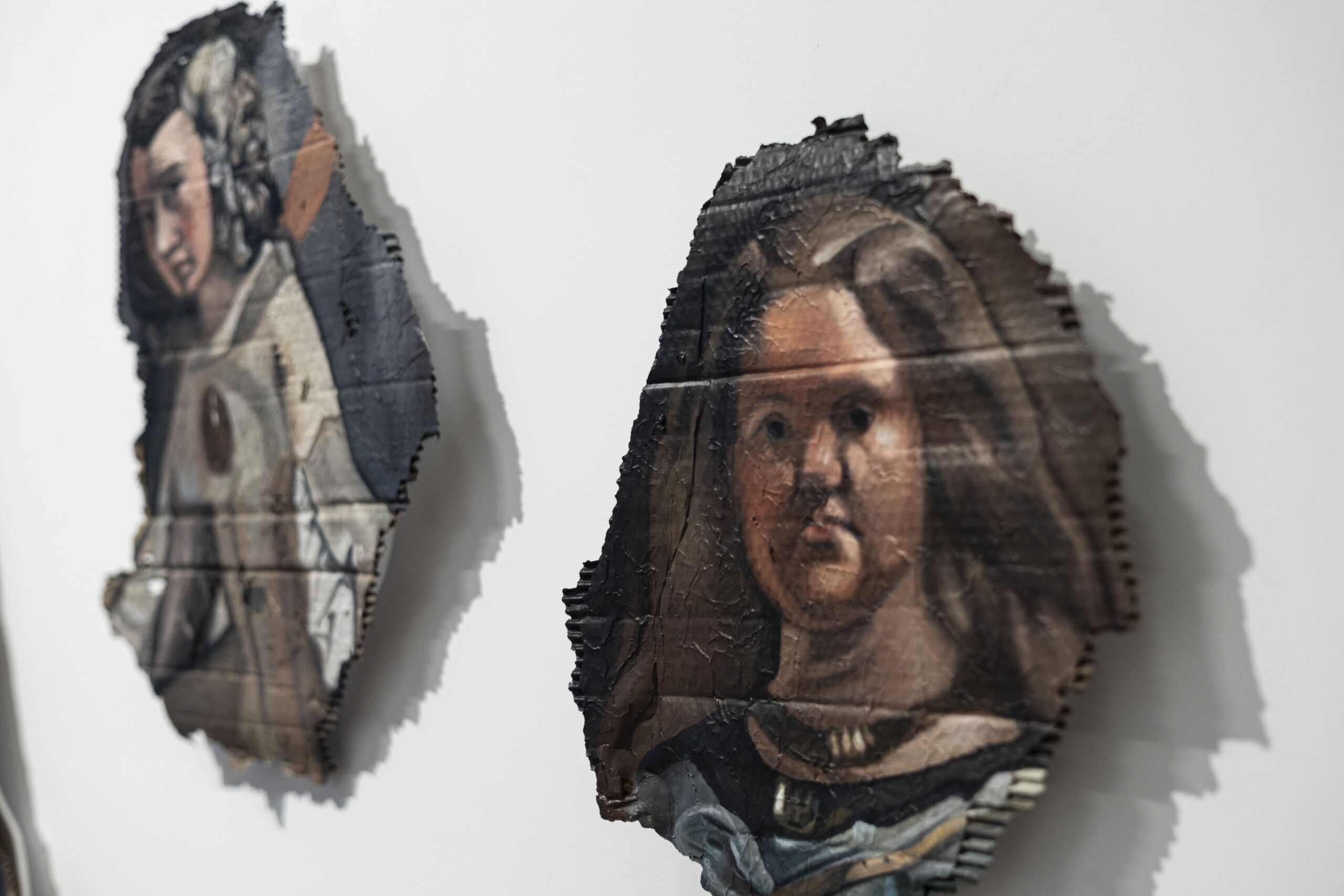
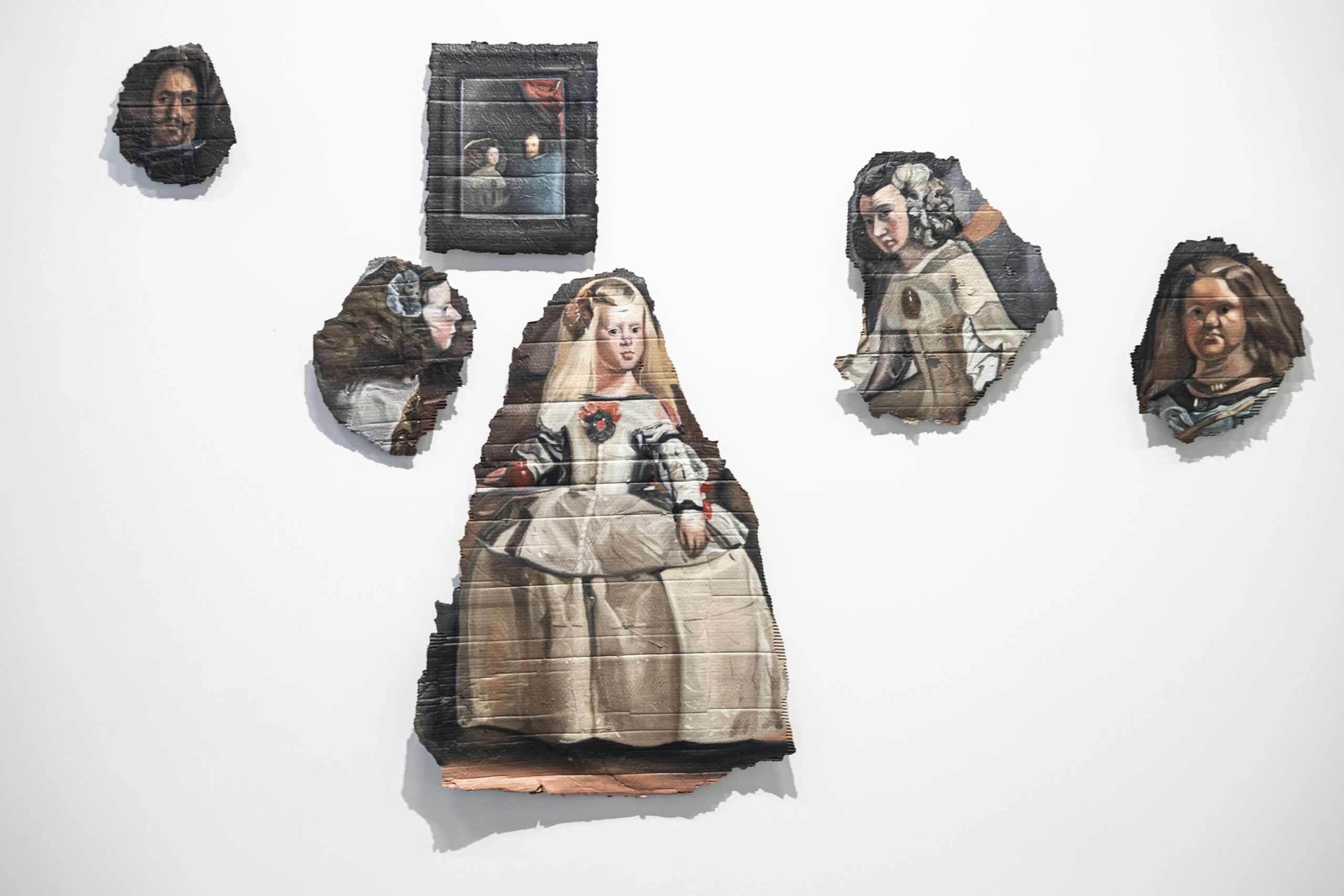
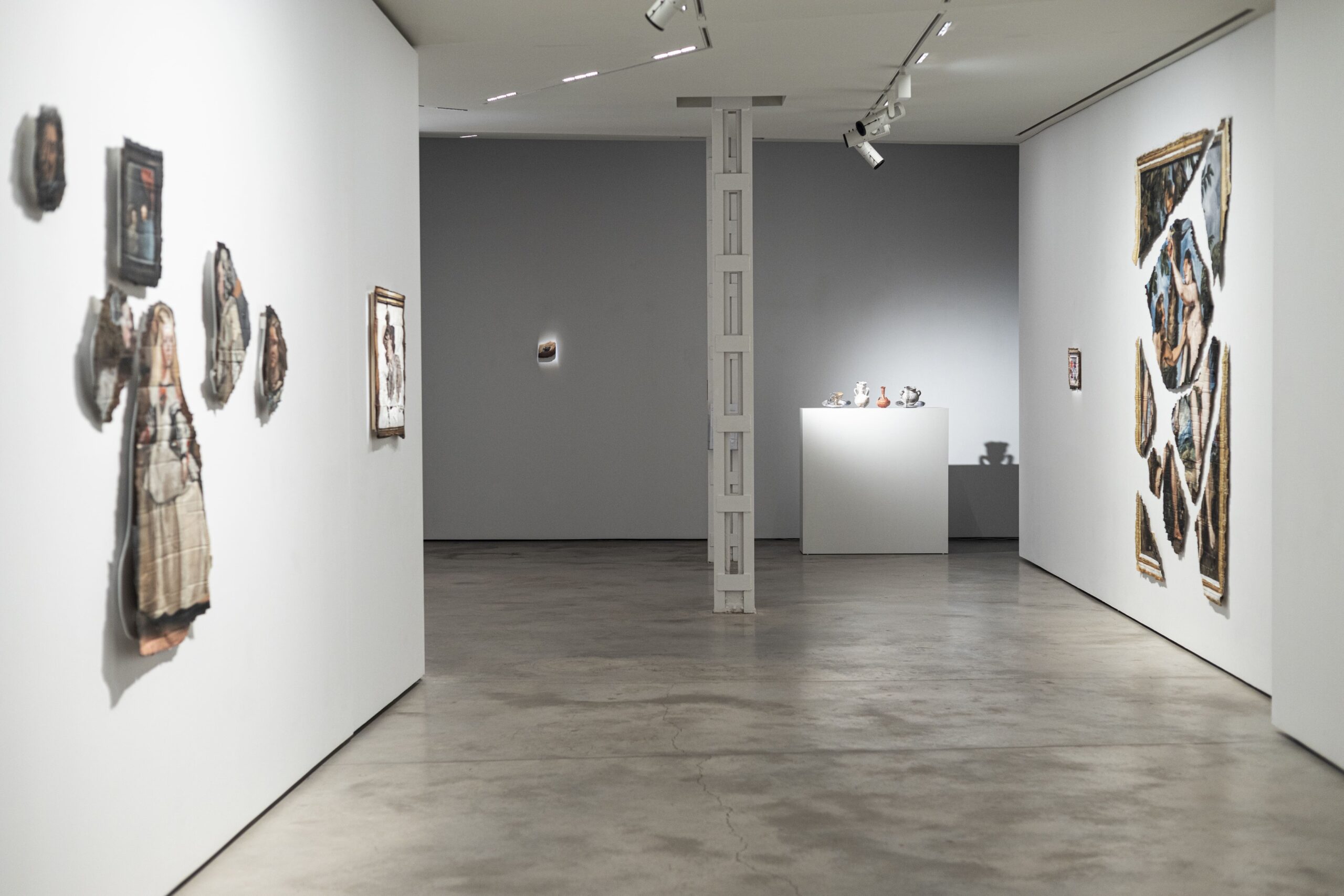
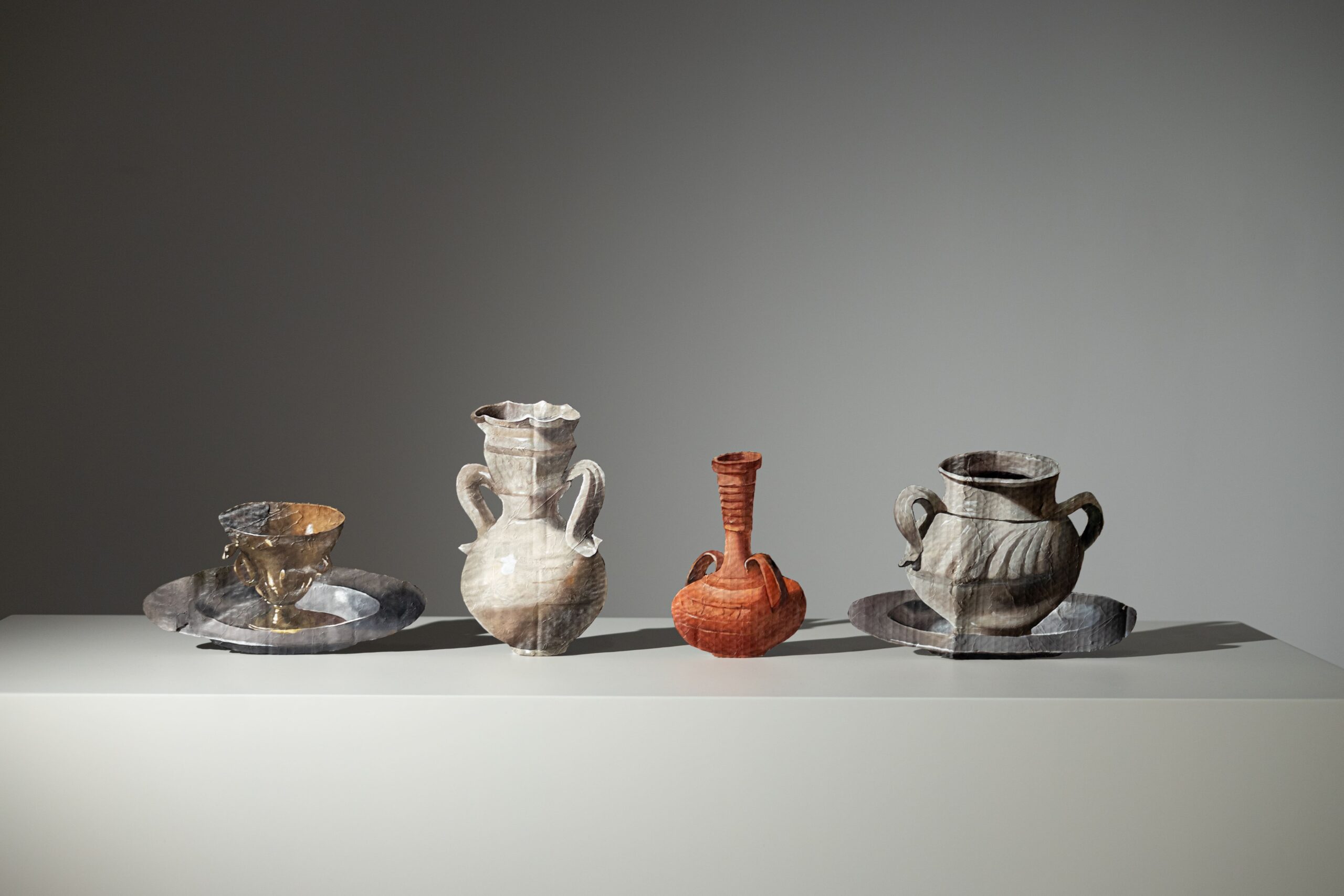
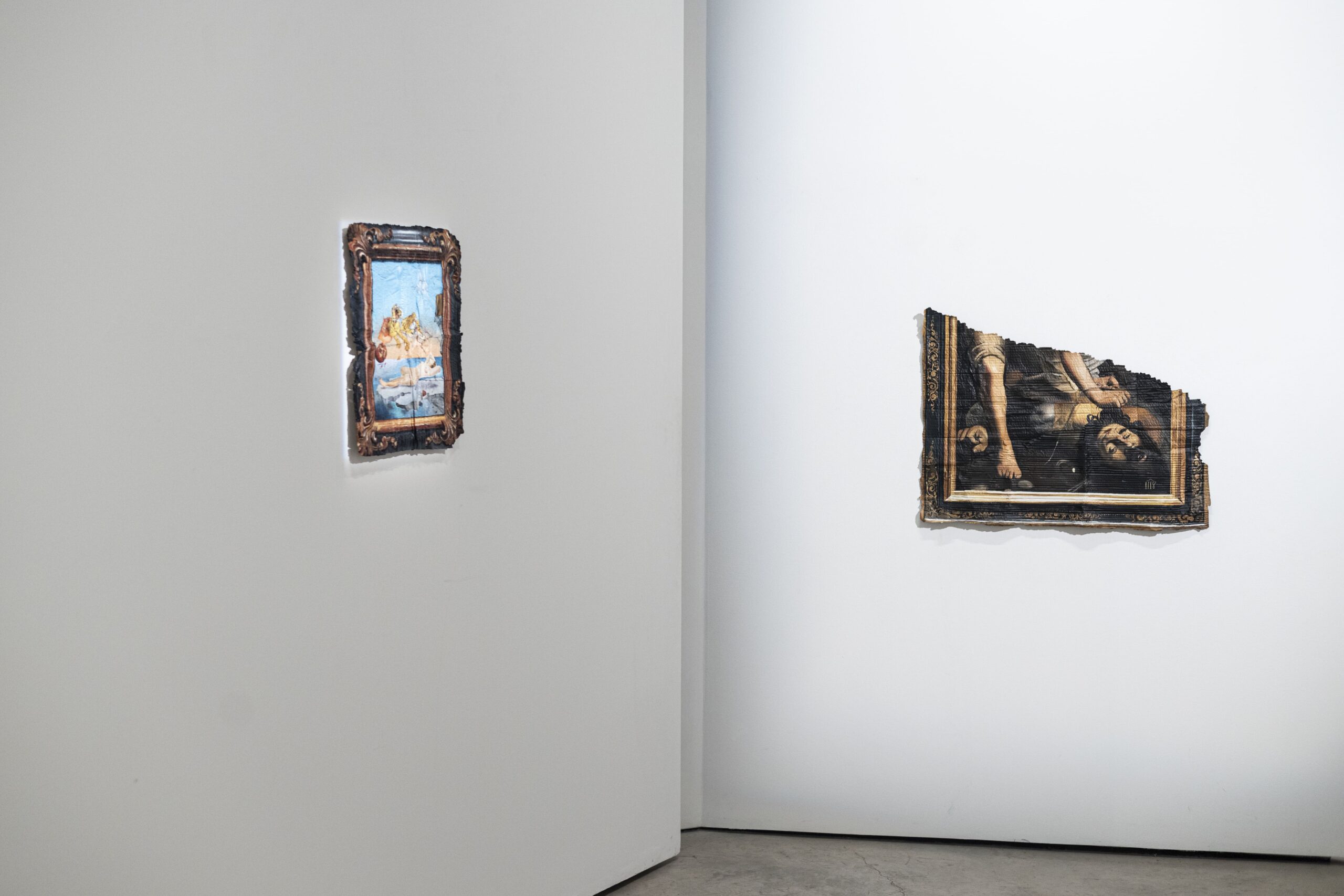
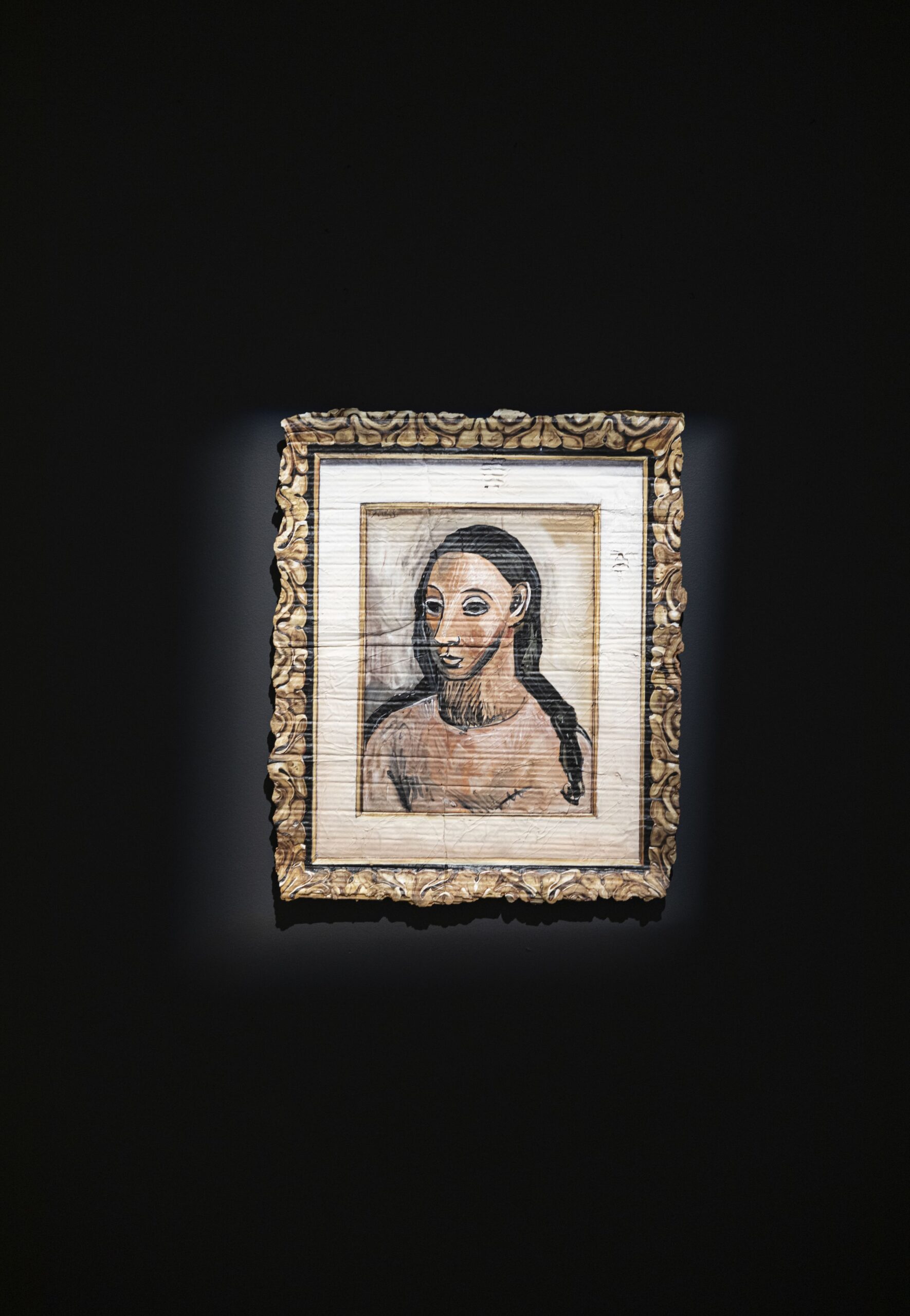
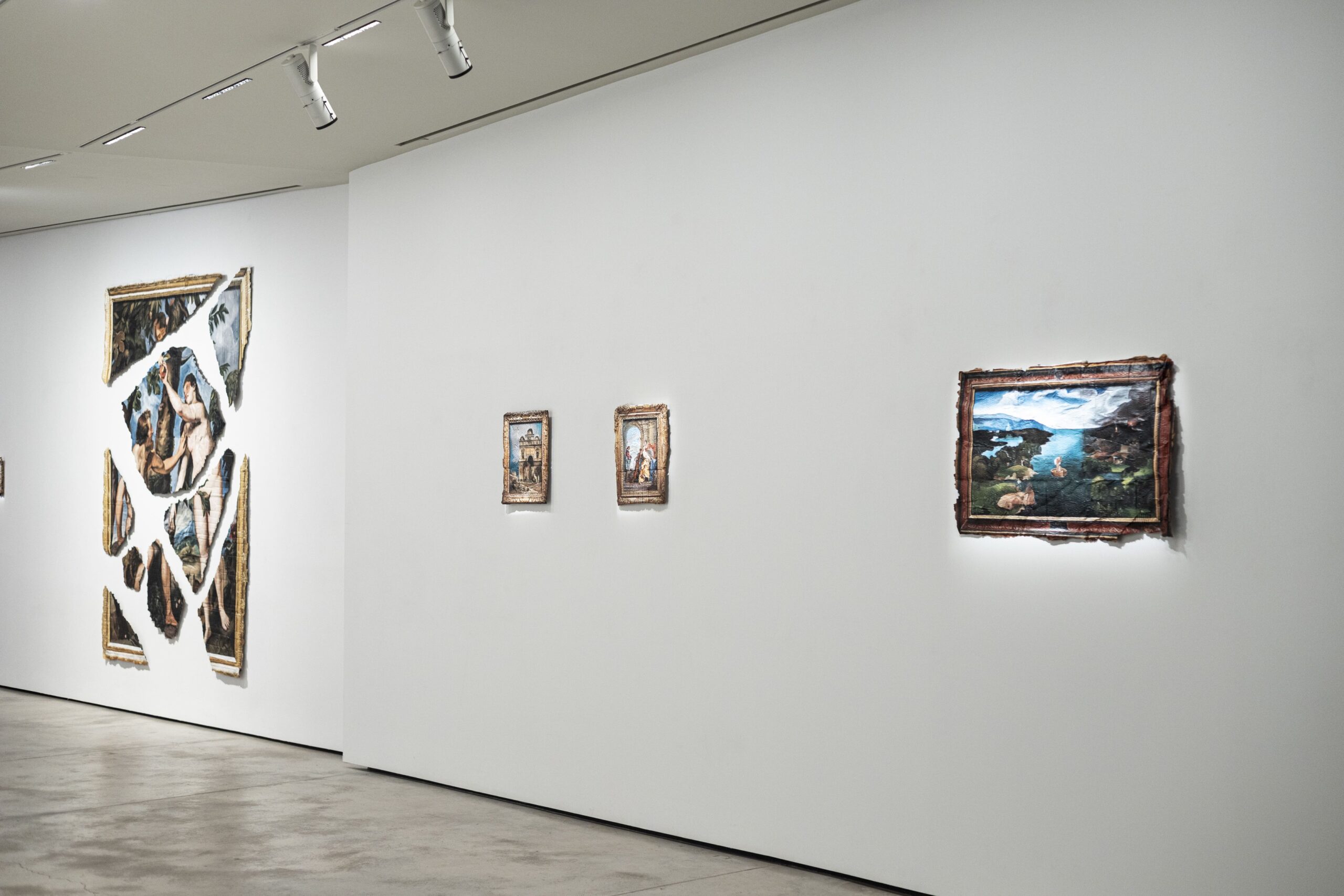
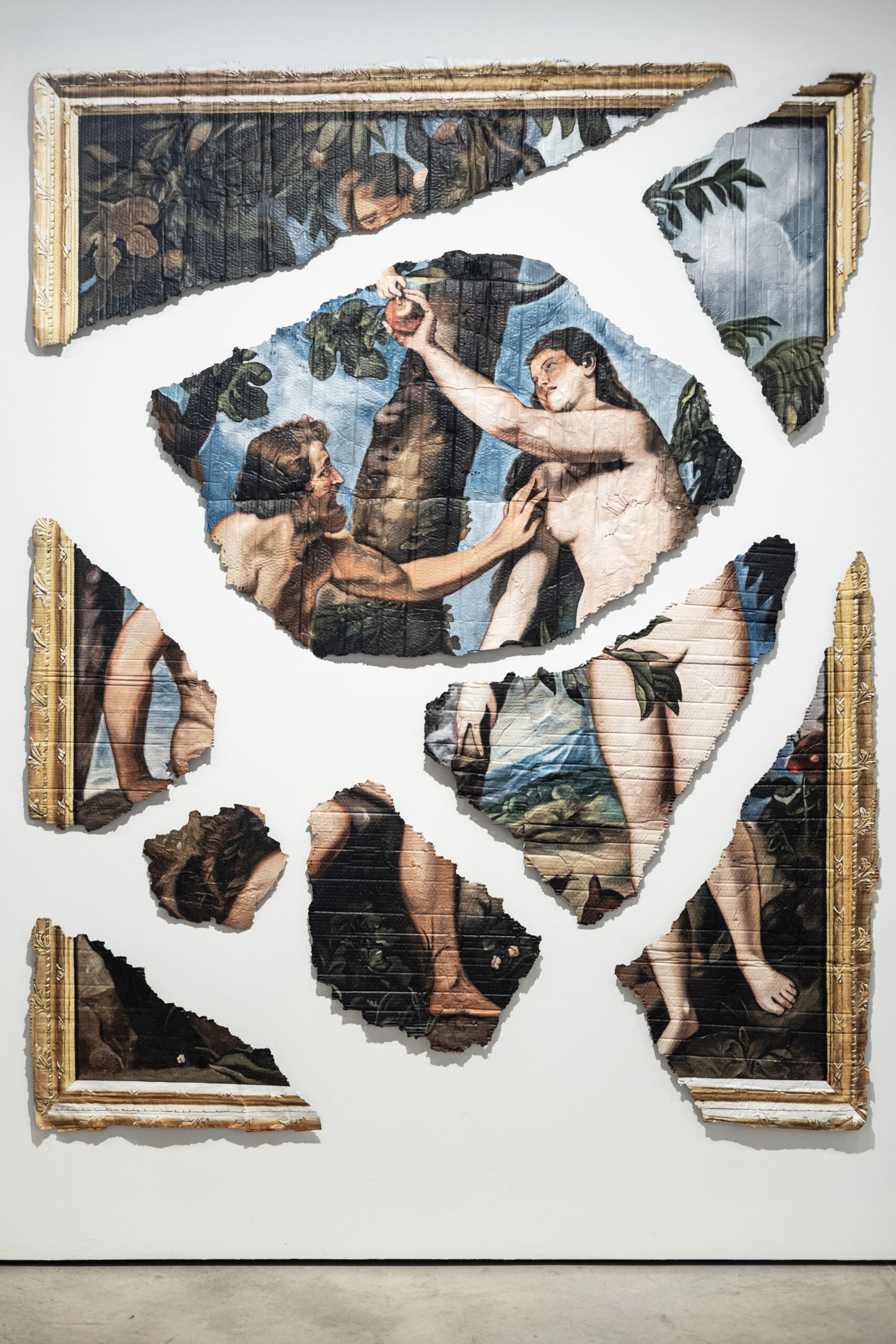
OLD MASTERS
Julio Anaya
In a conversation with Javier Díaz Guardiola, Julio Anaya recollects that he began his project “doing interventions in the abandoned, inhospitable, and decadent, routine haunts of the world of graffiti. In them I would represent paintings considered to be icons of the History of Art as trompe-l’oeils, carrying out an exercise of desacralization, taking the artworks out of the museum and relocating them in other places. Places stripped of the attributes of the museum such as protection, conservation and perpetuation of the work of art, thus producing a set of new meanings.” This artist posits, in this manner, a shift between the institution of the museum and the space deprived of qualities of the street, of the masterpieces to graffiti, inscribing the powerladen iconography of tradition upon found materials such as wooden boards, chunks of plasterboard, and, particularly, cardboard. His aesthetic program has many points of contact with the dialectic of place and noplace, having, perhaps, even greater affinity with Perejaume than with Robert Smithson, seeing that he is not trying to act like an “enthropologist” but as a strange “collector,” looking for energy not so much in the abandoned mines but in what we could could the abandon of history.
This iconic shift or detournement of Julio Anaya is built upon an untimely attitude, in the Nietzschean meaning of the term, avoiding the “historical disease” (which has surrendered to an epigonism while suffocating the possibility for any new incident with their monumental, antiquated, or critical attitude) and reframing representations in an age of collective amnesia. With residual materials it traces a kind of “return of the repressed” which amounts, in some cases, to bringing representations to the stage they purported to capture like he did, for instance, in the project “Paisaje, entorno y contexto” curated by Jaun Francisco Rueda for the Genalguacil Pueblo Museo: “In it,” points out Julio Anaya, “I was representing as trompe-l’oeil a painting of Jenaro Pérez Villaalmil, a Spanish Romantic painter, a work titled Vistas del castillo de Gaucín, which can be found in the Prado Museum. The place where I carried out this intervention located the spectator so that they could contemplate the representation and the represented, given that from the viewpoint of Genalguacil one could glimpse at the towers of said castle.”
In 2020, Julio Anaya produced in the Yusto Gallery/Giner de Marbella the exhibition Before 1881 which, according to his own statements, was inspired by the exhibition El sur de Picasso which he was able to see at the Picasso Museum of Málaga: “I was very interested in the way the influences of the Andalusians masters were mapped over the work of Picasso, and I loved,” says this young Andalusian artist, “the inclusion of works by Velázquez, Zurbarán…. Standing in front of these works I tried to imagine what kind of image somebody coming from a different country at that time would have of our culture. I didn’t want to drag the stereotypes with me, so I reduced the thematic spectrum to three specific subjects: landscape, religious painting, and costumbrismo. From then on, I went looking for works at La Aduana, at the Patrimony Museum, the Carmen Thyssen Museum, and at the very Picasso Museum. The title makes reference to the date of birth of Picasso, because, though he is not present in the exhibition, everything starts with him.” Julio Anaya is facing with courage the anxiety of influences, deploying the subtle revisionist coefficient of the clinamen2 which brings emblematic works of painting of tradition to residual surfaces. These “copies,” or, rather, these recreations adopt the material imperfections, but moreover take into consideration the field of recontextualization be it the graffiti-covered wall or the clinical walls of the gallery or the museum. A post-Póvera sensibility blends here with lucidly appropriationist strategies, which allows him, with absolute effortlessness, to paint again Tintoretto’s The Origin of the Milky Way, or “sediment” his version of Caspar David Friedrich’s Cairn in the Snow on a box for transporting bottles of Coca-Cola. Without a doubt, in his perverse passion for the frame of art he picks up on the “inhe- ritance” of the Duchampian ready-made and the obsession for the vulgar trans- formed into extraordinary that we find in Warhol.
The exhibition that Julio Anaya presents in the Yusto/Giner Gallery in Madrid is titled Old Masters, a project which, as the artist notes himself, “is born, without intending to fall in nostalgia,” out of the impact that he experienced when he encountered the great painters of tradition when he first traveled to Madrid when he was a first year student of Fine Arts: “As a preteenager I had visited other capitals and museums like the Louvre, the Vatican Museum, or the Uffizi Gallery, and I had been invaded by the “Stendhal Syndrome” but in this case it was different. I was beginning to educate myself and the knowledge that I was accumulating alongside the enthusiasm of doing what I wanted to do transformed it into an unforgettable experience. I was able to recognize the artists, I could distinguish their works by the differences in technique and I was aware of their context. The expectation and a certain quasifanatic exhilaration was not disappointed by the encounter.” Years later Julio Anaya recovers that aesthetic emotion as much as some works that caused it, though he also extents his appropriationist clinamen from the Prado Museum to the Thyssen Bornemisza Museum and the Museo Nacional Centro de Arte Reina Sofía. Among the works he makes versions-and-fragments, we have Van Eyck’s triptych of the Annunciation, David and Goliath by Caravaggio, Adam and Eve by Rubens or a view of Venice by Canaletto.
“Ultimately,” declares Anaya in a conversation with Díaz Guardiola, “I’m interested in the dialogue that takes place between the artwork and the spectator. Sinking their gaze in a play of appearances, a simulacra, through the artifice of the ‘trompe l’oeil,’ an artifice of persuasion, where I can try to deceive them so as to cast a shadow of doubt over how we perceive images, and, ultimately, reality.” In many cases, realism resorts to trompe-l’oeil not to blend with reality, but to produce a simulacra with full awareness of the game and at the artifice: overcoming the effect of the real to cast doubt. Trompe-l’oeil affords us the pleasure of the similar as much as the awareness that the identical has multiple differences, that is, that the logic of the gaze discovers, in the space of desire, the dissymmetrical: “From the start, in the dialectic of the eye and the gaze we see that there is no coincidence whatsoever, but a true bait effect. When in love, I ask with the gaze, it is something intrinsically unsatisfactory which always fails because—You never look at me from where I look at you. And the other way around, what I look at is never what I want to see. And, whatever the case, the relationship between painter and afficionado […] is a game, a game of trompe-l’oeil: a game to deceive something.” Strategy of deception or seduction, art keeps a distance with the “real”; it’s that crystal which Ortega spoke about in the dehumanization of art which allows us to activate the irrealization.
Julio Anaya experiences, in this exhibition of Old Masters, with the possi- bilities of the residual material, presenting works that he recreates in integral or fragmented fashion, managing thus to “unmask” them. Canonical paintings such as Velázquez’s Las Menina or the vases of Zurbarán acquired an almost objectual quality, highlighting their “essence” as ready-mades. It is not, far from it, a case of self-indulgent technical virtuosity nor does it maintain a “faithful devotion” to History, on the contrary, what he attempts is to behave, in the manner of Benjamin’s Angelus Novus, as a materialist historian which introduces “now-time” in what has come about, which is (ultimately) ruined. Julio Anaya himself has pointed out that the reinterpretation, the decontextua- lization, the recycling and inscription in an inhospitable field are decisive questions for his works.
History, warns Marx, happens twice, first as tragedy, then as farce. To a certain extent, the aesthetical postmodern state had something to do with the “repetition compulsion” or, to be precise, with the kind of deferred action (Nachträglichkeit) where différance is sought to be activated. Julio Anay “frames” these works in the wake of Pierre Menard’s deliberate anachronism, knowing full well that history doesn’t stop modifying the meaning of texts and images. “Given that I represent,” remarks Julio Anaya, “artworks that are “not” new, it could be contradictory to say that I’m bringing something new to the table; but, still, I hope I do. I understand that my work makes use of a recognizable image, but the result or meaning of it is given by the way it is represented. I want to think that my work is important and incites reflection.” And, moreover, when he appropriates Roger van der Weyden’s triptych of the crucifixion, he made the goddess Aphrodite on cardboards and when he reframed, accepting the invitation/incitation of José María Luna, Ivan Ivazovsky’s 1854 view of Málaga for the Russian Museum, he is sedimenting new reflections about art and its History.
Some years ago Julio Anaya left the Inmaculada “by” Velázquez abandoned in a building which was also abandoned. This double abandoning made him reinvent the painting in a derivative process, brilliantly reflecting on the frame, noting that the parergon is, to a large extent, the work itself. Ortega y Gasset noted that the artwork is an imaginary island which floats surrounding reality everywhere. “In order to happen it is, thus, necessary,” he wrote brilliantly in his “Meditations on the Frame, “for the aesthetical body to be isolated from the vital surrounding. From the land we tread on to the painted land we cannot go step by step. Moreover: the indecision of boundaries between the artistic and the vital disrupts our aesthetic pleasure. Hence why a painting without frame, in its conflation of its limits with the practical, extra-artistical that surround it, loses its poise and power of suggestion. It is necessary for the real wall to conclude suddenly, radically, and to find ourselves at once, without hesitance, in the unreal territory of the painting. We need an isolator.
That’s the frame.” Julio Anaya is not an “isolator” but a framer who recovers painting from its “abandonment,” capable of “ennobling” the images of the old masters with “ignoble materials.” His is a form of painting of circumstance, which locates us in the time of disconnection, when an “immaculate” image can pass completely unnoticed, waiting for some gaze to rescue it. What looks at us from Goya’s The Dog is but our fractured identity, in a Velazquian play of mirrors; meanwhile, we still try to translate the phrase that defines us: Time is out of joint. Framing issues, untimely images, fractured thoughts.
Fernando Castro Flórez

Munchies Art Club//Gabrielle Graessle | Extraordinary paintings
14 Dec, 2021
Mott Projects// In the Studio: Gabrielle Graessle
14 Dec, 2021
Elemmental/Daniel Núñez: «El arte es una forma universal de expresión»
23 Nov, 2021
Financial Times/Costa del Surreal:the Málaga school of artists
29 Oct, 2021
Revista AD/Julio Anaya Cabanding: todo lo que necesitas saber sobre el artista español del momento
1 Oct, 2021
Diario Sur/Yusto Giner explora el clasicismo contemporáneo de Los Bravú
24 Sep, 2021
Tesis | El arte de los Bravú // Canal sur
16 Jun, 2021
https://www.youtube.com/watch?v=P6SwROeygiQ&feature=youtu.be&ab_channel=canalsur
Carlos Pesudo: «Para mí el cuadro es la total libertad de jugar manualmente con la imagen, los símbolos y el gesto»
15 Jun, 2021
Carlos Pesudo: «Entiendo la pintura como un tablero de juego»
26 May, 2021
Carlos Pesudo presents ‘OVO’ at the Yusto/Giner Gallery
24 May, 2021
Details
- Start:
- 21 Feb
- End:
- 12 Apr
- Event Category:
- Julio Anaya Cabanding
- Event Tags:
- Julio Anaya
Local
- Yusto/Giner Gallery
-
C/Madera nº9
Marbella, Málaga 29603 España - Teléfono:
- +34 951 507 053